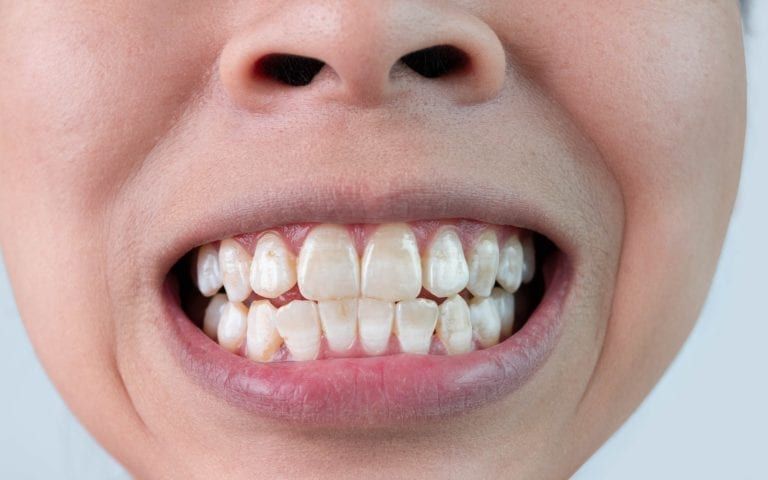White spots can be bothersome if you’re striving for perfectly healthy teeth because white spots can most often indicate early warning signs of decay. White spots cannot be reversed but only mended. White spots are caused by thinning enamel that often occurs due to overexposure to abrasive and acidic substances. There are many causes of white spot lesions, and depending on the type of white spot, dentists employ numerous techniques to recover lost enamel and help prevent cavities from developing. Overall, white spots are completely harmless on the surface and make you more compromised to infections and decay.
The Causes of White Spots on Teeth
Healthy enamel helps protect your teeth’ surface by providing a strong outer layer of calcium and bone material. The enamel layer protects the tooth’s inner parts, such as the dentin and pulp, from bacteria and food debris. Enamel is the hardest substance, but it’s also the most vulnerable to bacteria and decay. It’s also the most prone due to aspects such as aging and health. So when white spots occur, it’s often the earliest warning sign of potential decay.
White spots are a type of discoloration that often occurs due to multiple conditions and is the earliest form of tooth decay. White spots are weakened areas of enamel down to the microscopic level, causing micro-abrasive chips and rivets within the smooth enamel surface, often containing bacteria within the enamel’s pores. Over time, these white spots will develop further as you consume foods and beverages and eventually develop into cavities, further damaging the tooth.
As mentioned above, many conditions could potentially cause white spots to develop, and some of the most common include:
- Demineralization: Often the most common cause, demineralization occurs as an onset of dental plaque accumulating due to poor oral hygiene or wearing braces. When white spots occur due to demineralization, the condition can be reversed if treated in its earliest stages.
- Enamel Hypoplasia: This health condition is defined by thinner enamel, and it often results from hereditary factors, vitamin deficiencies, and medications. Enamel hypoplasia is often a life-long condition, often requiring patients to take extra precautions to keep their teeth healthy, including sensitive toothpaste, fluoride treatments, and extended dental checkups.
- Fluorosis: Ingesting large quantities of fluoride, despite its health benefits, can cause the tooth to discolor, creating that chalky white or yellow appearance. Drinking over-fluoridated water, taking fluoride supplements, and even swallowing toothpaste can cause fluorosis.
Potential Treatments For White Spot Lesions
According to studies from the World Journal of Clinical Cases, several treatments can potentially remove white spot lesions, including microabrasion. Microabrasion works to remove the weakened enamel through acidic and abrasive agents and applies those substances to the surface to conservatively remove broken down enamel and restore the appearance of your teeth. Other treatments, such as fluoride treatments, porcelain veneers, and bleach whitening gels, can help balance the enamel’s look and feel to help prevent white spot lesions from developing.
